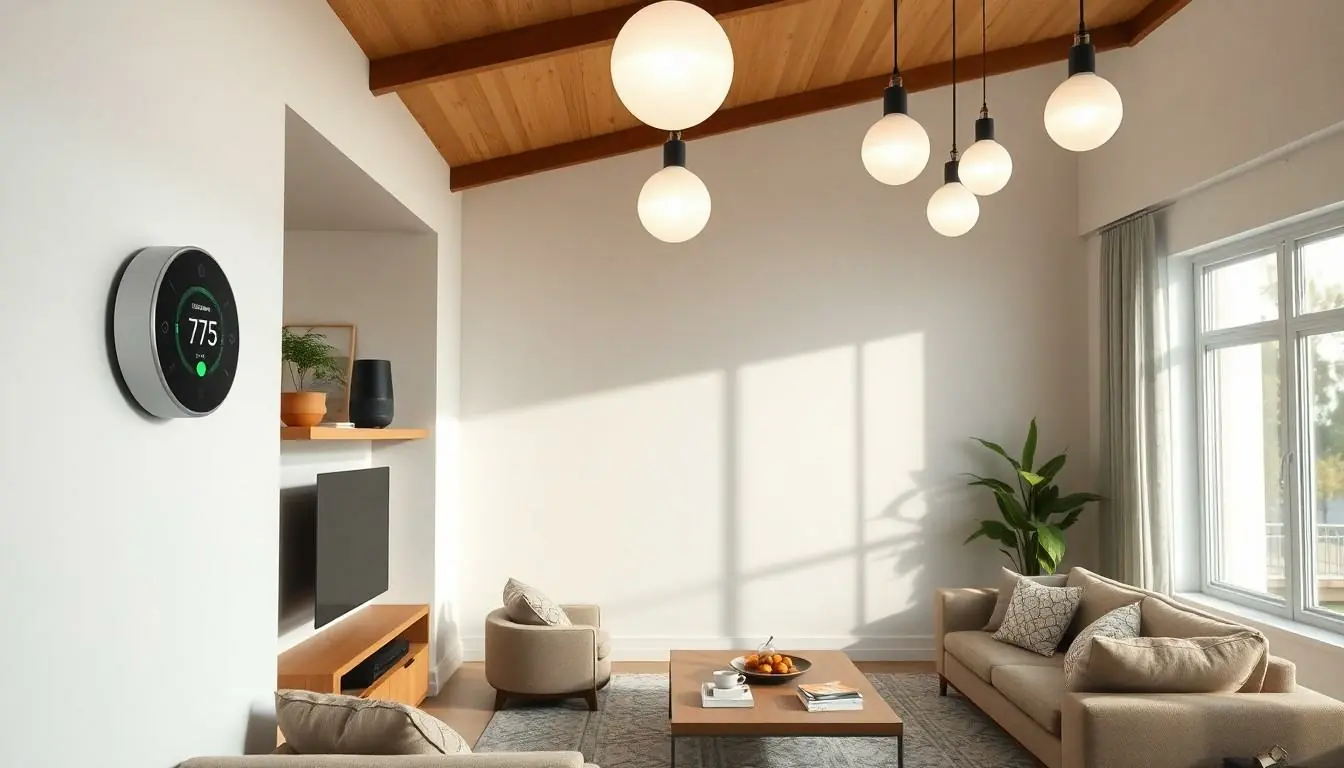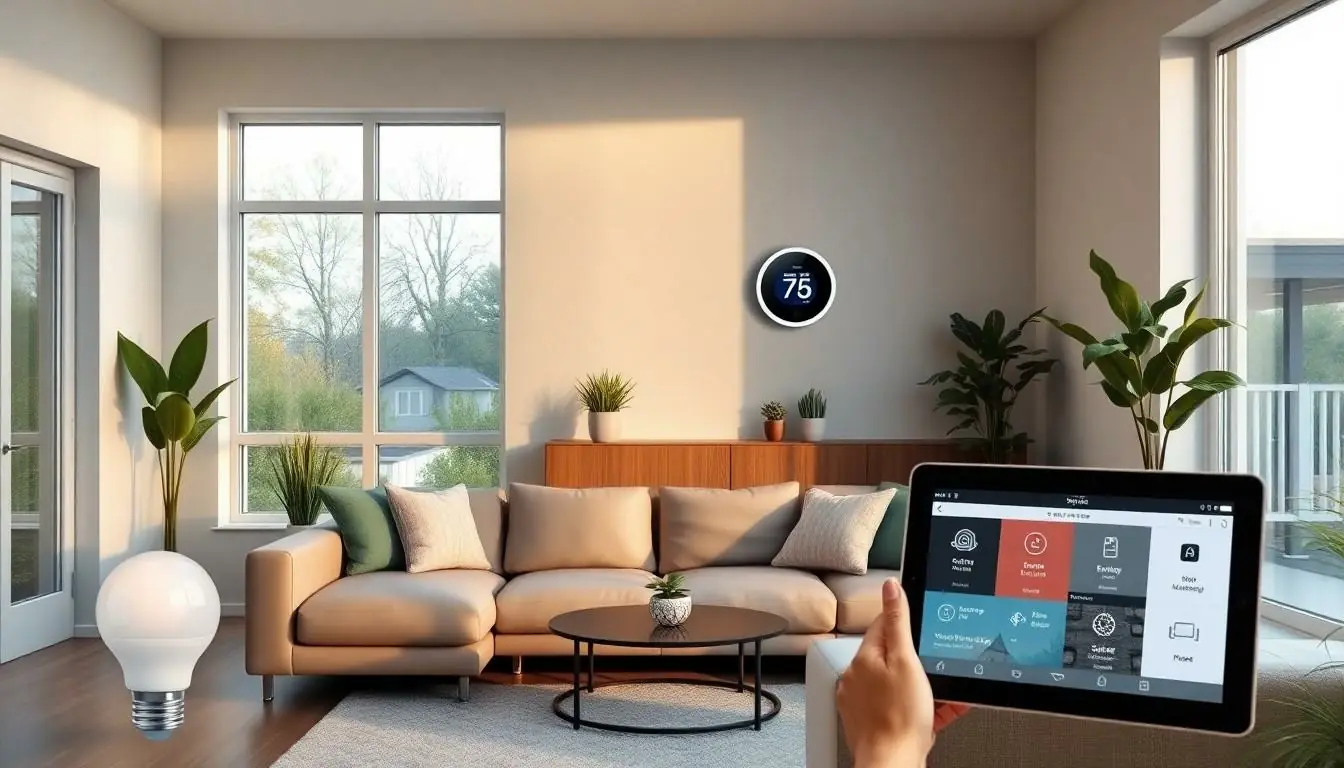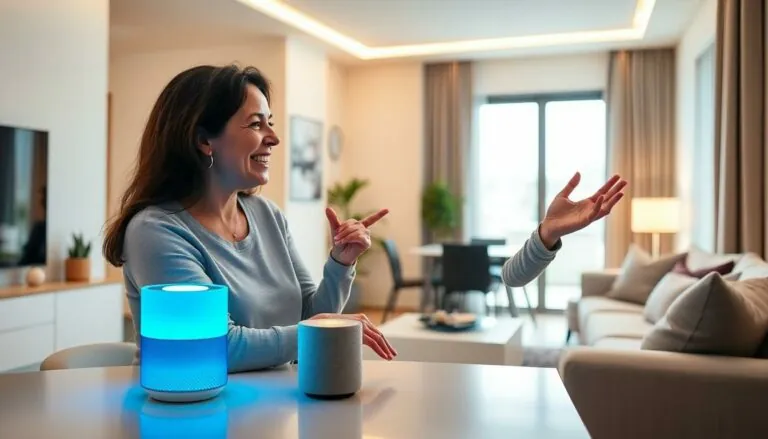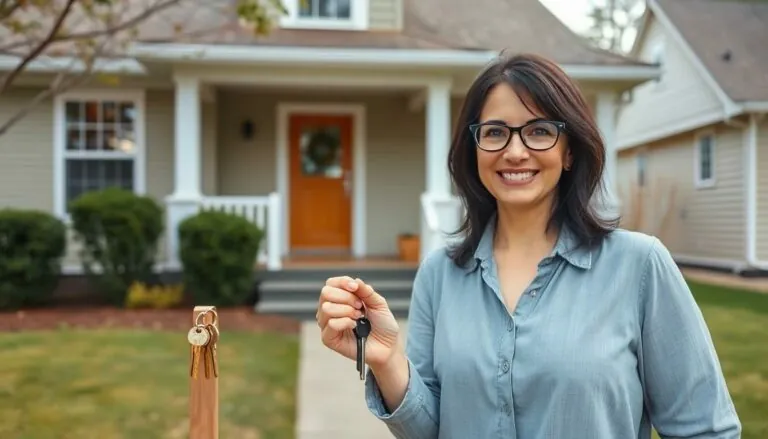Imagine walking into your home and having the lights dim to your favorite setting while your favorite playlist starts playing—all without lifting a finger. Sounds dreamy, right? But before diving headfirst into the world of home automation, there’s a burning question on everyone’s mind: how much does it actually cost?
From smart thermostats to automated security systems, the price tag can range from pocket change to a small fortune. With the right information, you can navigate this tech wonderland without breaking the bank. So grab a seat, and let’s unravel the mystery of home automation costs—because who said making your home smarter had to be complicated or expensive?
Table of Contents
ToggleOverview of Home Automation
Home automation involves integrating a variety of smart devices that enhance convenience and efficiency in daily life. Various systems allow control of lighting, security, temperature, and entertainment from a central device or app. Smart lights can adjust brightness based on time of day or occupancy, providing both comfort and energy savings.
Advanced features include automatic locks and surveillance cameras, increasing security. Many systems provide remote access, enabling users to monitor their homes while away. Voice-activated assistants, like Amazon Alexa or Google Assistant, can manage multiple devices using simple commands.
Costs associated with home automation can differ significantly. Basic setups might start around $100 for smart plugs or bulbs, while comprehensive systems could exceed $5,000. Installation fees, if opted for professional help, can contribute to overall expenses as well.
Reflecting on potential savings, home automation can yield reductions in utility bills. Smart thermostats can optimize heating and cooling, resulting in savings up to 10 to 15 percent annually. Investing in eco-friendly devices not only supports sustainability but often qualifies for rebates or incentives.
Navigating the market requires assessing specific needs and budgets. Researching product specifications and user reviews enhances satisfaction. He or she may consider future expandability, ensuring initial investments remain relevant as technologies advance.
Actively exploring options makes the process manageable. Many platforms offer compatibility checks, allowing seamless integration among different brands. Assess filtering options to streamline decision-making and avoid costly missteps. Understanding infrastructure, like Wi-Fi strength and compatibility, plays a vital role in the success of a home automation project.
Factors Influencing Home Automation Costs

Multiple factors play a crucial role in determining home automation costs. Equipment choices and installation processes significantly affect overall expenses.
Equipment and Technology
Smart devices range in price due to differing capabilities and brands. Basic equipment, like smart bulbs, can cost around $10 each, while premium products, such as advanced security cameras or smart refrigerators, may exceed $1,000. System compatibility is essential; not all devices work seamlessly together. For example, popular brands like Amazon Alexa and Google Nest offer ecosystems that enhance functionality but might limit device options. Users often benefit from investing in high-quality technology to maximize performance and longevity. By carefully selecting equipment that meets specific needs, individuals can manage costs effectively.
Installation and Labor
Installation expenses vary based on system complexity. Basic setups might only require a few minutes of DIY effort, while comprehensive installations can take several hours or more. Professionals typically charge between $50 and $100 per hour, depending on the intricacy of the project. Specific configurations, such as wiring for automated lighting or security systems, usually incur additional costs. Complexity directly correlates with labor needs and time investment. Exploring service packages that include both equipment and installation may provide a streamlined approach to managing expenses. Overall, understanding installation requirements aids in creating an accurate budget.
Types of Home Automation Systems
Home automation systems can be categorized into two main types: DIY solutions and professional installations. Each option presents unique advantages and considerations regarding cost and complexity.
DIY Solutions
DIY solutions offer straightforward implementations for budget-conscious individuals. Smart devices like smart bulbs and plugs can cost around $10 each, making them accessible. Users can install these devices without professional assistance, allowing for immediate enhancements to convenience and energy management. Various platforms, like Google Home and Amazon Alexa, support integration and provide user-friendly interfaces. Flexibility often comes with these systems, enabling users to expand their setups gradually based on personal preferences and needs. Overall, DIY solutions deliver a cost-effective pathway to home automation, enabling individuals to control elements like lighting and temperature from a central app.
Professional Installation
Professional installation suits those seeking comprehensive home automation setups. Expert technicians manage complex integrations that involve multiple devices and systems. Costs typically range from $50 to $100 per hour for labor, depending on project scope. Professional services ensure seamless connectivity and compatibility among devices, mitigating risks associated with improper configuration. Customization opportunities often arise during consultations, allowing homeowners to tailor systems to specific requirements effectively. Many companies offer after-installation support, providing peace of mind. Hence, while professional installations incur higher initial costs, they deliver long-term reliability and enhanced user experience within home automation systems.
Average Costs of Home Automation
Home automation costs vary widely based on the complexity and scope of the system. Basic setups cater to budget-conscious individuals, while more extensive installations offer advanced features.
Budget Options
Basic home automation options are ideal for those new to smart technology. Smart bulbs and plugs typically cost around $10 each, and simple starter kits may range from $50 to $200. These devices integrate easily with systems like Google Home and Amazon Alexa, allowing for seamless control of lighting and appliances. Many affordable solutions do not require professional installation, making DIY setups accessible and straightforward.
Mid-Range Solutions
Mid-range systems often provide enhanced features and better integration. Costs generally fall between $200 and $1,000, depending on selected devices and brands. Smart thermostats, security cameras, and smart speakers enhance convenience and security. Such solutions often include professional installation, with fees ranging from $50 to $100 per hour, ensuring optimal setup and functionality. Many users prefer mid-range options for a balance of quality and affordability.
High-End Systems
High-end home automation systems represent the pinnacle of technology integration. These systems often exceed $5,000, covering advanced features like whole-home audio, sophisticated security systems, and comprehensive monitoring. Custom installations, managed by experienced technicians, ensure everything operates in harmony. While the initial investment is significant, the long-term benefits include increased comfort, energy savings, and enhanced property value. Such systems cater to homeowners seeking the ultimate smart living experience.
Home automation offers a blend of convenience and efficiency that can enhance daily living. While costs can vary widely based on system complexity and features, there’s a solution for every budget. Whether opting for DIY installations or professional setups, understanding individual needs and financial limits is crucial.
By researching products and considering future expandability, homeowners can make informed decisions that align with their lifestyles. Embracing smart technology not only simplifies tasks but can also lead to long-term savings. With careful planning and the right approach, anyone can transform their home into a smart haven without breaking the bank.





